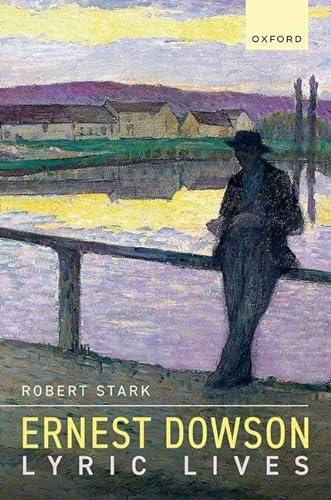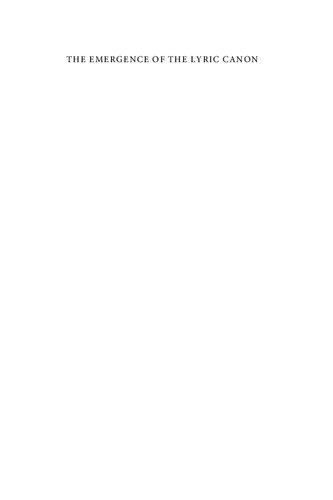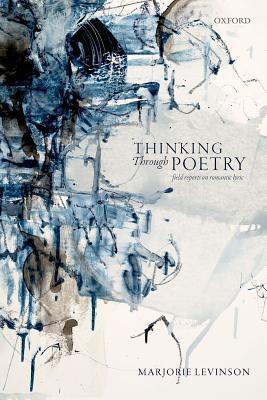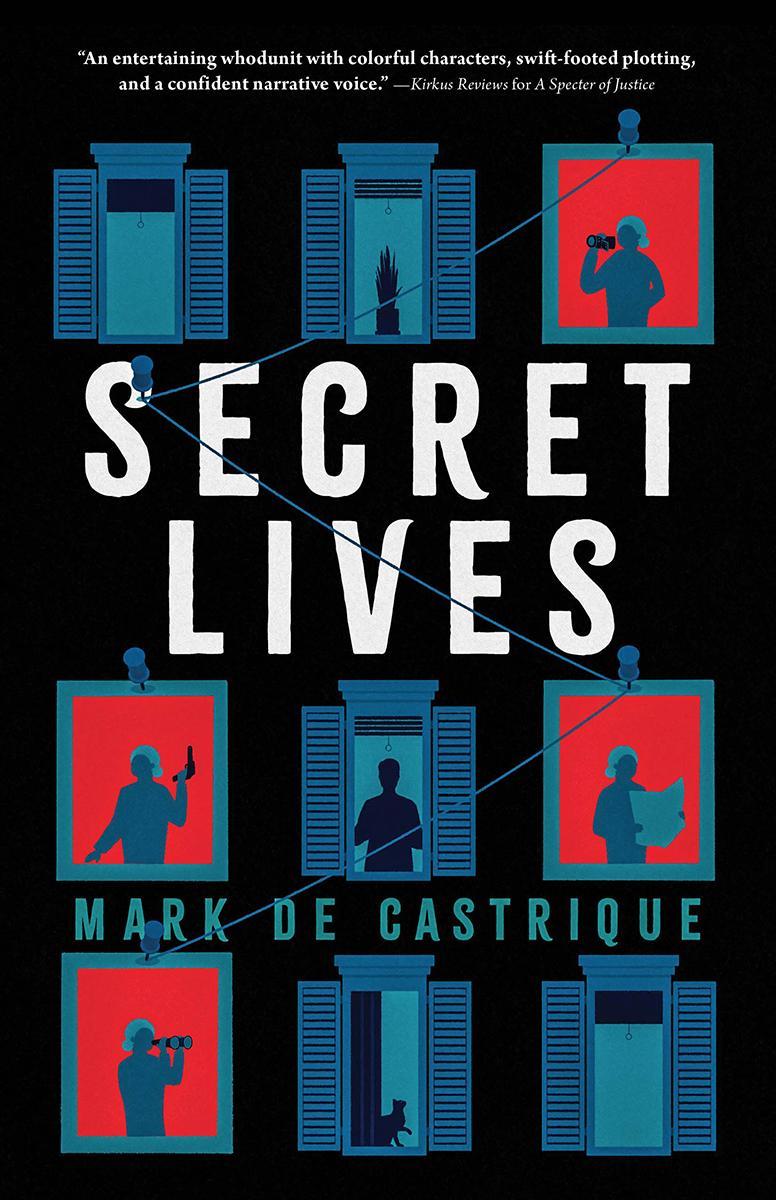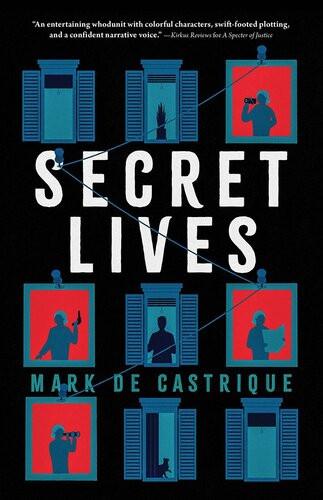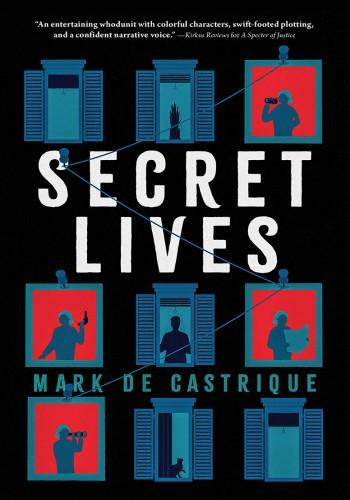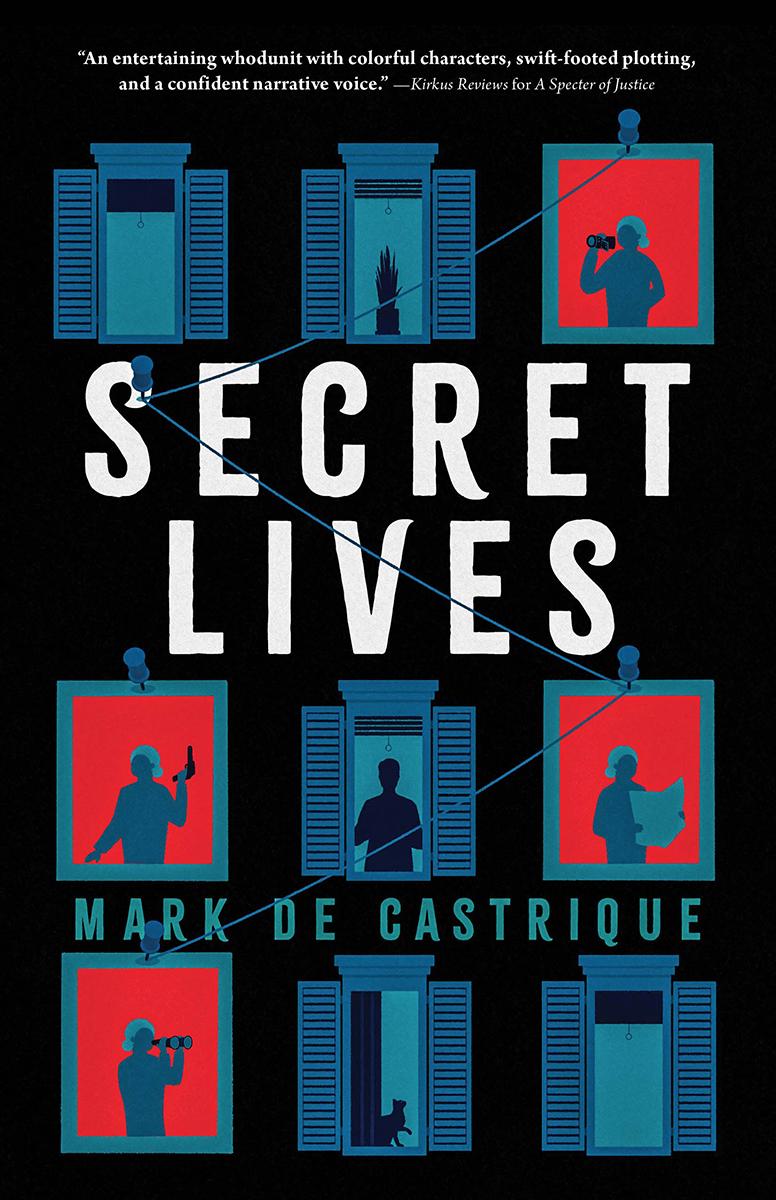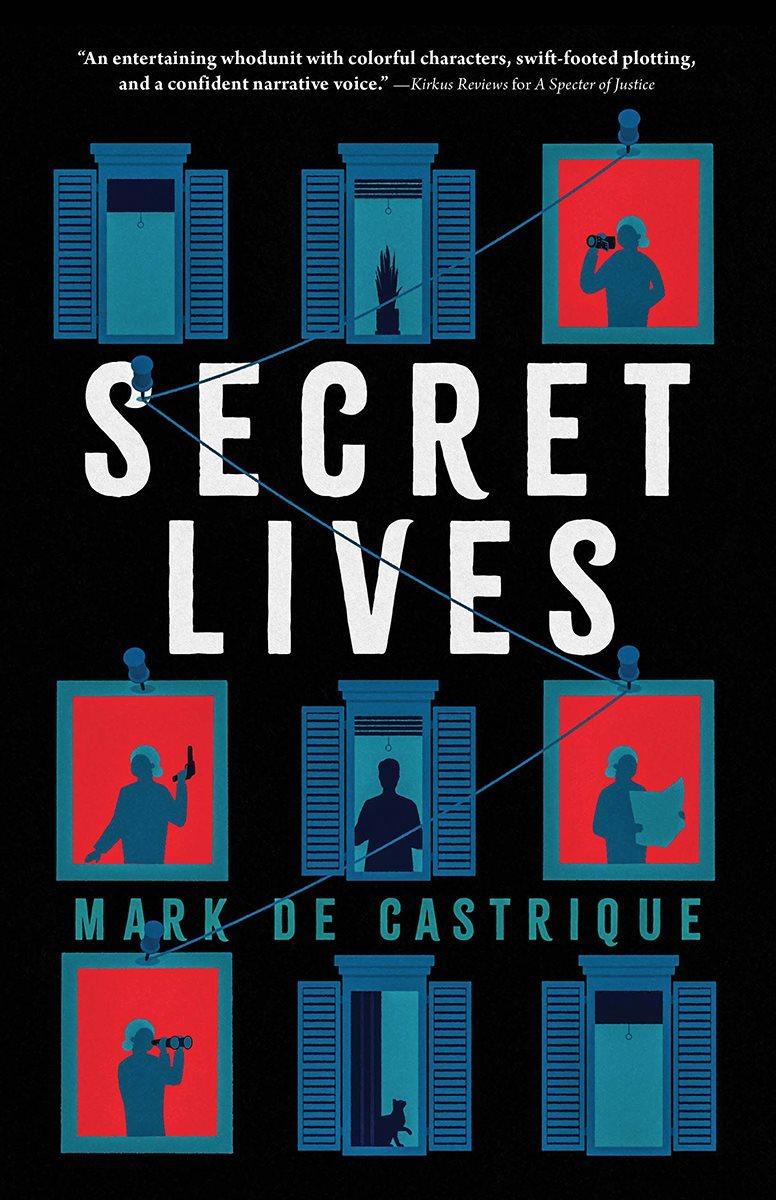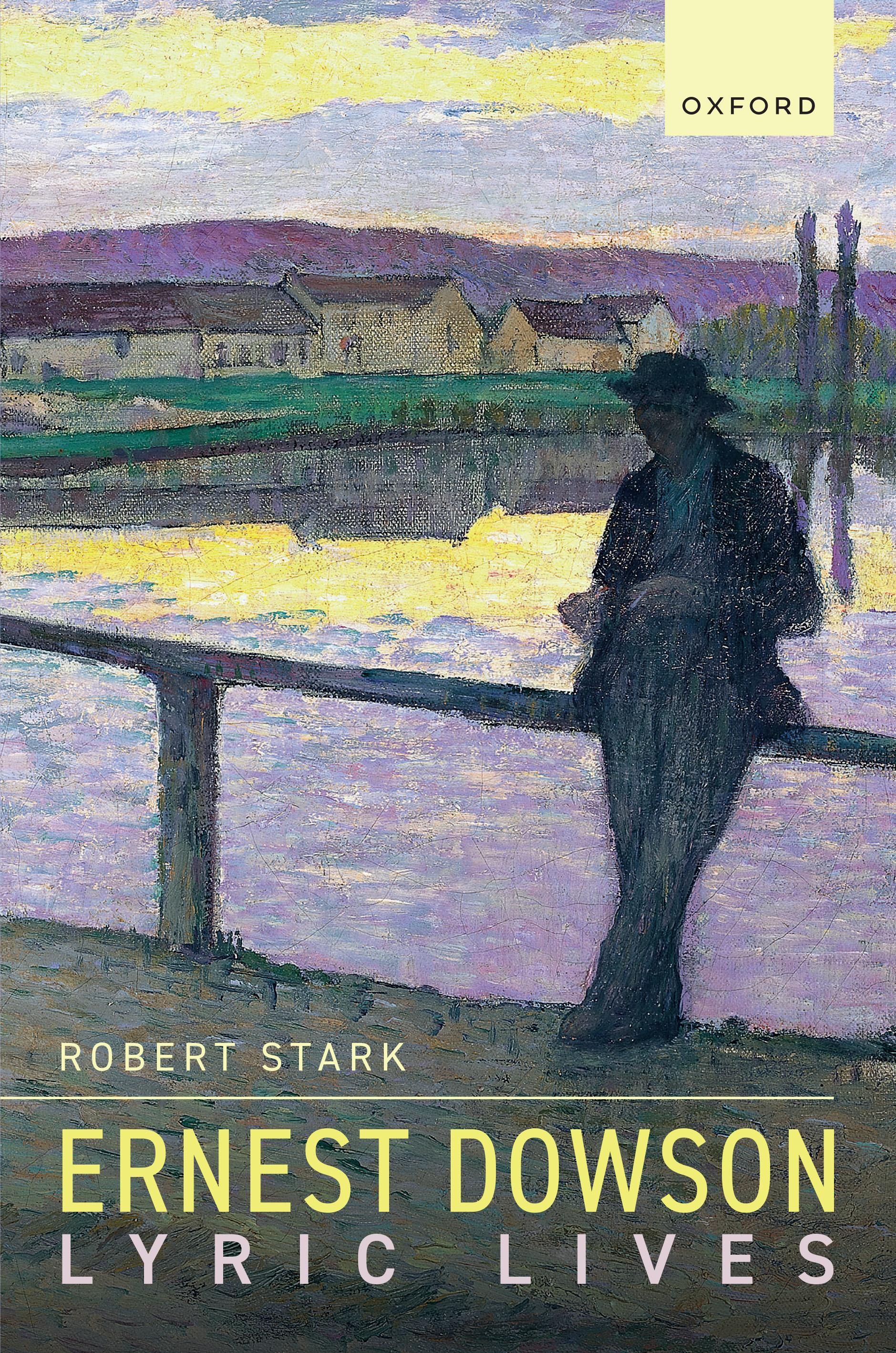Introduction
TheMuses’SternerLaws
PoorLegendaryPoet
Attheendof TheManWhoShotLibertyValance,MaxwellScottof TheShinbone Star tearsupandburnstheeditorialhehasbeenworkingon,whosehappenings arerelivedinthecourseofthefilm:‘ThisistheWest,Sir.Whenthelegendbecomes fact,printthelegend.’¹ Scottknowsinstinctivelywhatpassesforsaleablecopy,and ismindfulthattruth,laidbaresolongafterthefact,wouldonlydamageRansom Stoddard’sreputation.So,whenJamesStewart’scharacterfinallydepartsShinbone upontheapexofhispoliticalascent—includingappointmentsasStateGovernor,Senator,BritishAmbassador,andVice-Presidentialnominee—theironiclast wordsofthefilmposeamoreexistentialdilemma,even,thanLeeMarvin’sdroll summonstoapointlessshowdowninthestreet.‘Nothing’stoogoodfortheman whoshotLibertyValance’,heismerrilyinformed.Ransehasbeenmistakenfor thismanhiswholecareer,evenassuming,briefly,hewasthatmanhimself.Ifhe aspirestoapoliticalfuture,hewillhavetogoonallowingsuchwell-intendedcongratulationstostand,uncorrected.ButRansehasjustcomefromthefuneralof TomDoniphon,thetruetitularcharacteranddisrememberedlocalhero,played byJohnWayne:hewincesatthemisnomer.Heldsolongtoransombylegend,will heforegohisJunctionCityconnectionwiththeeastboundexpress,andapparent destiny,settleinShinboneasthreatened,comeclean?²
Ibeginthisbookattheotherendoftheline;fareastofShinbone;eccentric, insomeways,ofinstitutionalizedliterarystudies;atthevalanceofliberty,soto speak.Retainingconfidenceinfact,havingpiecedtogetheranobliterate,disregardedstory,Iintendtousemycopy;nottoswellareputationbuttoacknowledge adispossession.ForthelivesofLordByronandOscarWilde,menwho‘stood insymbolicrelationtotheartandcultureof[their]age’,havenotbeensocompletelysensationalizedbytheiracquaintancesandinitialcritics,norhastheirwork
¹ TheManWhoShotLibertyValance,directedbyJohnFord,featuringJohnWayne,JamesStewart, VeraMiles,andLeeMarvin(Paramount,1962).
² Intheoriginaltale,RansomeFoster‘couldhavegotridoftheweightofthataffairlongago...by tellingthetruth’;buthe‘owe[d]...toomuch’toBertBarricune,‘hisNemesis,hislifelongenemyand themanwhomadehimgreat’,toevertellthetruth(DorothyM.Johnson, IndianCountry [Lincoln: UniversityofNebraskaPress,1996],106,104).
beensothoroughlycollapsedintothecultsoftheirrespectivepersonalities,ashas beenthelifeandworkofErnestChristopherDowson(2August1867–23February 1900),theobjectofthepresentstudy.³ LikethatofRansomStoddard,Dowson’s caserevealstheblinding,obfuscatorypowerofunhinged,professionalgossip, howsoeverinspiringtheoriginaldeeds,howevercivic-mindedtheirapprovalor censure.Dowson’sposthumouscareer,thatonceseemedrelativelyassured,has putteredintodotage,andstandsontheprecipiceofirrelevanceandoblivion.This bookaimstoushertheoncepre-eminent poètemaudit offthelegendarylocomotive,ifonlytoresumehisminor,butdignifiedanddecorous,placeintheparish chronicle.
Whatstandstobegaineddependsonwhetherwehavecollectivelyretained someuseforsustained,empirical,textual,andbiographicalcriticism,whichmay seem,atthishermeneuticjuncture,unworldly.LikeJohnFord,Ihaveshotin blackandwhite,whenTechnicolor,andastoundingspecialeffects,areavailable andexpected.Mywashed-outcastwillseemsprierfortheiraustereframingand sympatheticshadows,perhaps,butthisisnotaconservativechoice.Anunsophisticatedbookiswantedbecause,inDowson’scase,thefacts are straightforward; theyhavebeenneglectedanddistorted,butmayyetprovegenerative,ofinsights intohislifeandwork,andintothefascinatingepochinwhichhestrivedand wrought.Anempirical,chronologicaltreatmentstandsafightingchanceofdispellingthemythopoeichaze,ofundoingthecumulativedilapidationofmore thanacenturyofsensationalcommentary.Well-intendedjournalismonceserved Dowson’sreputationadmirably;itnowdoeshumiliatingdisservicetohiswork.
MarionPlarr(daughterofDowson’sconfidante,Victor)mayhavefirstappreciatedthatthedecisivepartofhisposteritywasthewholesalefabricationofa literarylife.WrittenwhenthecultofDowson’spersonalitywasatitszenith—in the1930sand1940shewasregardedalmostastheequalofKeats,andhispoems wereapparentlybawledoutbyundergraduatesatweehoursinthestreetsofEngland’smostvenerableuniversitytowns—Cynara:TheStoryofErnestandAdelaide (1933)blatantlyfictionalizedwhateveryonethentooktobethesalientaspects ofDowson’slifeandwork:histhwartedamorousrelationswithEllenAdelaide MaryFoltinowicz,theeleven-year-oldchildhefirstencounteredasatwenty-twoyear-oldmanabouttown,andfellprecipitouslyinlovewith.Plarr’snovelisnot moreineptthanwhathassometimespassedforDowsoncriticism.Ithasthemerit ofinsinuating(howeverinadvertently)thatsecondarycommentary—herfather’s importantmemoirofDowson,forexample—isinevitablymisrepresentational.To statethisperfectlyobviousfactsoplainlywasanaffronttoDowson’sseriouscritics becausetheywereessentiallyengagedinthesamespuriousconfabulation.Plarr’s
³ OscarWilde, TheCompleteLettersofOscarWilde,editedbyMerlinHollandandRupertHartDavis(London:FourthEstate,2000),729.
fictiveapproachwas,nevertheless,awell-establishedwayofrespondingtoDecadentwriting.‘Toorganizethefragmentsofsomeoneelse’slifeintointelligibleand probablyparts,inordertotranslatethewholeintoastory:whatimpertinence!’, wroteMallarmé,ofRimbaud:‘AllIcandoispushtothelimitsthiskindofmisdeed’.⁴ Plarr’snovelalsoextendsDowson’sownefforttowrite vieromancée,inhis strangelycontrivedshortfictionandtwocollaborativenovelswrittenwithArthur Moore.Indeed,Dowson’swholeoeuvreisbestunderstoodasakindof‘Decadent lifewriting’,situatedonaspectrumincludingbiography,memoir,andimaginary portraiture,anddefinedbywhatCrowellandMurraycallthatgenre’s‘speculative,sensual,experimental’orientation.⁵‘Becausetheydependonandrefertolife’, Potolskyadds,such‘formshighlightthewayartmodifiesits“roughmaterial”’.⁶ By extension,thesecondaryliteraturewhichDowson’slifeandworkgivesrisetoin theearlytwentiethcentury,ofwhichCynaraisexemplary,can,forwantofabetter term,becalledDecadentcriticism.
Plarr’stitlecallsattentiontothehermeneuticdifficultyposedbyDowson’slyric corpusbyrepeatinghismostfamousclassicalallusion,toHoraceandthenceto Sappho.Ascriticsperiodicallyremark,Cynarameans‘artichoke’inLatin,hardly adignifiedemblemofthebeloved.Artichokesareaspeciesofthistle:theediblepartoftheplantconsistsofflowerbudswhichareyettobloom.Artichoke flowersareastonishing,extraterrestrialdetonationsofcolour,matchingDowson’s descriptionof‘Lunarrosespaleandblue’in‘ARequiem’.⁷Astheyarecultivatedfor humanconsumption,artichokesareseldompermittedtoflower;budsandbracts arestrippedaway,prematurely,togetatthesucculentcentre.Thespatiotemporal axesofDowson’spre-eminentsymbolproclaimadistal poiesis ofdoomedanticipation.Moreso,even,thantheallusivewritingofhiscontemporaries,hislyrics consistoftightlywoven,organicnetworksofinflorescence.Heisguardedand disingenuousaboutthepersonalcircumstanceswhichinformthem.Theirdense intertextualitiesandself-similaritiesareoftentheirmostdistinctive,astheyare,in Potolsky’sterms(whoseworkisseminalinthisregard),theirmostDecadent,features.‘NonsumqualiserambonaesubregnoCynarae’,certainly,isstructuredand presentedinthisfashion:meaningandtruthdopalpablyexist,andareobtainable,buttheyareenfoldedinallusivenutritionalstrata;extra-articulationsthat
⁴ StéphaneMallarmé, Divagations,translatedbyBarbaraJohnson(Cambridge,MA:Harvard UniversityPress,2007),71.
⁵ EllenCrowellandAlexMurray,‘WritingDecadentLivesandLetters’, Decadence:ALiterary History,editedbyAlexMurray(Cambridge:CambridgeUniversityPress,2020),378.
⁶ MatthewPotolsky,‘DecadenceandRealism’, VictorianLiteratureandCulture 49.4(winter2021): 571.
⁷ Dowson’spoemsareshortandreadilyavailable;aseditorsinvariablyfollowthetextof Verses (1896), Decorations:InVerseandProse (1899),andeditorialprecedentwhencanonicaltextsare unavailable,Iwilloffernoversecitationexceptatitle,unlessdisambiguationisrequired.Similarly, prosecitationsarekeyedinprincipleto Dilemmas:StoriesandStudiesinSentiment (1895),andtothe firstpublishededitionsofsubsequentlyappearingstoriesandnovels.Linenumbersareincludedfor ThePierrotoftheMinute,ADramaticPhantasyinOneAct (1897).Dowson’stranslations—thefirstof whichappearedrelativelylate,in1894—areomittedfromthisstudy.
may,finally,beinseparablefromtheprimarylyricaldesignation,the genii ofthe poem.
Dowson’sbelovedisn’tlikenedtoanartichokeunwittinglyorfornothing.The eccentricsymbolgovernshisextensivelylayered,reticulatedapproachtomaking lyricalsense.Butthefigurealsodescribestheepistemologyandhermeneuticstructureofthesecondarymaterialwhicharosetochampionthatwork,andwhich culminatedinwhatJohnGawsworthtermedthe‘DowsonLegend’,a‘mélangeof luridhalf-truths’masqueradingasliterarycriticismthatintroduces(andprolepticallydismisses)Dowsonasadrunkard,adebauchee,andalatentpaedophile.⁸The etymologyisinstructive:legendswereoriginally readings,storiesthatwereread.⁹
InvertingtheShinboneadage,theybecomefactbybeingprinted.Thecumulativeeffectofsuchpseudo-criticism—journalism,really,whereineachnewbract becomesanincreasinglyextrinsicoutgrowthofthevegetablestructure,always moreremovedfromthesucculentkernelofthetext—istoperpetrateaheavy-duty swindlelikethatwhichtransformsRansomStoddardintoTheManWhoShot LibertyValance.
Twoperniciousaspectsofthismechanismmustbeidentifiedattheoutsetof thisinquiry:first,astubbornobservereffectcomestogovernthereceptionof Dowson’swork.Themoreauthorityisinvestedinthelegend,thelessfathomable becomealldatapointswhichdonotadequatetomyth,nomatterhowintrinsicallyknowabletheyare.Dowson’srelationshipwithDecadenttradition;hislove ofFranceanditsculture;hisCatholicism;hislongbattlewithtuberculosis;and abandonmentofcreativewriting—totakeonlythemostvitalfacetsofhisvibrant text-life—areobscuredinconsequence.Second,anunshakeabledogmahasarisen thatmakesDowson’swriting‘soessentiallypoetic’thatitsurrendersits‘fragile... holdonoutwardthings’.¹⁰ Ifthisjudgementisfundamentallycorrectonastylistic level,ithasbeentakenwildlyoutofcontexttoimplythatDowson’scanonamounts tooneprolongedabstractionwithouthumaninterest.Symonsmeantnothingof thesort,andwroteinthesameessaythat
Peoplewillcomplain,probably,inhisverses,ofwhatwillseemtothemthefactitiousmelancholy,thefactitiousidealism,and(peepingthroughatafewrare moments)thefactitioussuggestionsofriot.Theywillseeonlyaliteraryaffectationwhereintruththereisaspoignantanoteofpersonalsincerityasinthemore explicitandarrangedconfessionsoflessadmirablepoets.Yes,inthesefew,evasive,immaterialsnatchesofsong,Ifind,impliedforthemostpart,hiddenaway
⁸ JohnGawsworth,‘TheDowsonLegend’,EssaysbyDiversHands17(1938):93–123;NickFreeman, ‘“TheHaremofWords”:AttenuationandExcessinDecadentPoetry’, DecadentPoetics:Literatureand FormattheBritish FindeSiècle,editedbyJasonDavidHallandAlexMurray(NewYork:Palgrave, 2013),95.
⁹ ‘Legend,n.’Allsubsequentdefinitionsarefromthe OxfordEnglishDictionary,3rdeditiononline (OxfordUniversityPress). https://www.oed.com.AccessedDec.2022.
¹⁰ ArthurSymons,‘ALiteraryCauserie:OnaBookofVerses’, Savoy 4(Aug.1896),91.
likeasecret,allthefeverandturmoilandtheunattaineddreamsofalifewhich hasitselfhadmuchoftheswift,disastrous,andsuicidalenergyofgenius.(93)
LifetheresurelyisinDowson’sverse,‘feverandturmoil’,but‘impliedforthemost part,hiddenawaylikeasecret’.Yeatsconcurred:‘onefeelsthepressureofhislife behindeverylineasifhewereacharacterinaplayofShakespeare’s’.¹¹Themistaken notionthathisverseisetherealandvapidresultsfromagradualfailuretoappreciateitsessentialverisimilitude,andfromLongaker’sauthoritativeandapparently unassailablereadingof‘Nonsumqualis’,which,balkingattheidentificationofthe addresseewithFoltinowicz,concludesthatthepoem‘result[s]’from‘afeelingof deviationfromanidealoflove[not]fromanattachmenttoachild’.¹² Thefamous allusionthenbecomesaninertcypher:‘ifCynaraisnotAdelaidethensheis“in Horace”orelse“Sheisn’tanybody”’,Longakersays(82;quotingMarionPlarr, 51).Thishasbecomethenormativereadingofthelyric,banishinganythought thatDowsonmighthavehadareal,live,loverinmindwhenhedraftedit.His wholecanonisthenpresumedtooperateonthesameinanebasis.
Statedinonceconventionalterms,Dowson’sdenselynetworkedtextsepitomize astructuralistidealoflanguage,maximallyintensifiedforlyricalexpression.They wearaSaussureanconnectednessconspicuouslyupontheirsleeves.Dowsonmay notbemoreallusivethanotherpoets,buthiswritingismoreself-similar,andhe endeavourstomakeasalientfactofthis.LindaDowlingrecognizesthatDowson’s maturestyleisachieved
byseverelylimitingwhatwemaycallhisverbalpalette,andbyfrequentrepetition oflines,half-lines,andwords,mostnotablyinthepoeticformslikethevillanelle, whererepetitionis,asitwere,writtenintotheform.Dowson’s‘wine,womenand song’arethusnotsomuchsynecdochicalofalargerworldas,alongwithafew othermaster-words—‘vanity,’‘child,’‘gray,’‘roses,’‘tired,’‘weep’—constitutiveof theonlyworldthereis.Indeed,wemaysayofDowsonwhatGeoffreyHartman hassaidofValéry,namely,thathisreductionofpoeticsymbolstoaveryfew confersuponthemthepowerofabstractvariableswhosemeaningresidesina system—asystem,moreover,thatislargelyindifferenttotheusualresponsibilities ofrepresentation.¹³
¹¹ W.B.Yeats, TheLettersofW.B.Yeats,editedbyAllanWade(London:Hart-Davis,1954),548.
¹² Longaker, ErnestDowson (Philadelphia,PA:UniversityofPennsylvaniaPress,1944),83.Dowson’sshortfictionthenbecomes‘chaste,restrainedrecordsofsuffering,ofdevotiontoanideal’(S,8). AsPotolskyremindsus,‘Verisimilitudewasakeyterminseventeenth-andeighteenth-centurycritical theoryanddescribedaverydifferentwayofthinkingabouttherealityoffiction.Stressingrule,order, andconventionabovemerereflection,thedoctrinearguesthatartshouldbeprobableandlifelikebut neverimitatelifedirectly’(Potolsky,‘DecadenceandRealism’,568).
¹³ LindaC.Dowling, LanguageandDecadenceintheVictorianFindeSiecle (Princeton,NJ:PrincetonUniversityPress,1986),205–6.Toclaim,however,thatDowson’sachievement‘isreachedthrough parsimonyratherthanexpropriation’diminishestheimportanceofallusivityandself-similarityinhis writing(204).
Whilethislineofinquiryhasbeenthoughtfullypursued—byWeiner,Freeman, andmostsystematically,byPotolsky—Dowling’sinterventionhasnotbeenwidely appreciated.¹⁴ Moreover,ifDowson’sverseisstrictlymatrixed,itsreceptionis, too.Ingeneral,hiswritinghasbeenpoorlyservedbyafacileassumptionthat itisincompatiblewithinformedtheoreticalcriticism.Thismay‘yieldnowand thentosimpleappreciation’,asSwannavows,butmustnotbepermittedtofall intoabeyance.¹⁵ WhereprofessionalcriticismhasprovenunequaltoDowson’s parsimoniouschallenge,thisislargelybecauseoftheobduracyofitsownselfpropelled,autotelicmyths,andtheunacknowledgedsensibilitiesservedbyits orotundlegends,not—andthisismymajor,unspokencontention—not becauseof anyirredeemableliterarydemerit.IfDowsonandhisworkappearunsuitedtoour times,thisismainlybecauseithasbeenpresentedtotwenty-first-centuryreadersindegenerateterms,byjournalistswhoseinterestsarewellservedbyliterary tittle-tattle,nottruth.
Hereinliesthesignificanceofthisstudyforreaderswhowillnevercarefor Dowson’swriting,whatevermaybepleadedforit.Formorethanacentury,ithas beenaffordedagrudgingcanonicalallowance,whilebeingstifledintheservice ofadubiouscultofpersonality,whichrendersitDecadentatallcosts.Dowson employedthewordjustonceinprint,attheendof‘Transition’,whereadistinct prosodicemphasisonthesecondsyllablerestrictsitsscopetosolardeclension.¹⁶ Heis,properly,an‘æsthetic’poet;notinPater’ssense,exactly,butinasense devolvedfromPater.Hisabsorbingbiographyhasbeenvulgarizeduntilitbecame aluridfable.Otherwisediscerningreadershavecontentedlyabjuredtheevidence ofhispoemsandstories—inanerathatfetedclosereading,noless—inorderthat Dowsonshouldappearirremediablydrunk,drug-addled,anddepraved,thebettertoserveasfoiltohisdistinguishedinheritors.Indefaultofacriticalaccount ofDecadence,thisisnotsurprising.Dowsonbecame the minorexamplewhich establishedaModernistmajority:hewouldhavetobeinventedifhedidnotexist. Indeed,hewasinvestedwiththestatusofexemplary poètemaudit—byW.B.Yeats andEzraPoundespecially—expresslytoperformthisfunction.¹⁷ YetasMarion Plarrrealized,theimpliedpoet-loverof Verses,likethebelligerentanddoomed
¹⁴ SeeStephanieKudukWeiner,‘SightandSoundinthePoeticWorldofErnestDowson’,NineteenthCenturyLiterature 60.4(Mar.2006):481–509;NickFreeman,‘HaremofWords’,83–99; Matthew Potolsky, TheDecadentRepublicofLetters:Taste,Politics,andCosmopolitanCommunityfromBaudelairetoBeardsley (Philadelphia:UniversityofPennsylvaniaPress,2012).
¹⁵ ThomasB.Swann,Preface, ErnestDowson (NewYork:Twaine,1964).
¹⁶ Dowson’scorrespondencemakesnoreferencetoDecadenceassuch.
¹⁷ Modernismmust‘disavow...anyconnectiontotheDecadents’,and‘discredit’them,‘inorder topromoteModernistoriginalityandnewness’(KirstenMacLeod, FictionsofBritishDecadence:High Art,PopularWriting,andtheFindeSiècle[Basingstoke:PalgraveMacmillan,2006],153).The1890sare therefore‘themostmisunderstooddecadeoftheentireVictorianAge’,asadirectresultof‘propaganda byT.S.Eliot,EzraPound,RogerFryandothers,whopostulatedanautonomouspoeticrevolution emergingphoenix-likefromtheashesofthenineteenthcentury’(ChrisSnodgrass,‘ThePoetryofthe 1890s’, ACompaniontoVictorianPoetry,editedbyRichardCronin,AlisonChapman,andAntonyH. Harrison[Oxford:Blackwell,2002],321).
poetasterof TheTremblingoftheVeil orthelewddebaucheeof‘HughSelwyn Mauberley’,wasalreadyadeadringer,anallusion,asfeignedas‘Cynara’herself.
Theothercornerstoneofthe‘DowsonLegend’,theauthorialandcriticalpromotionofFoltinowicztobecometheco-originalforceofhiswriting,isalsoacanard: Dowsondidnotwriteextensivelyabouther,inverse.¹⁸ Herascenttothecritically unassailablepositionof‘muse’,thevirtualcollaboratorinDowson’swholeimaginativeenterprise,mustserveasawarningaboutthepropensityofwell-intentioned academicdiscoursetowardsself-propulsionandsovereignty,tofalsifyrealityin theserviceofideology.Onthispoint,EdwardSaidstillspeakswithgreatestforce andclarity.Theminisculemythopoeiasofthe‘DowsonLegend’havelittleobviouslyincommonwiththeworld-shapingmetanarrativesoforientalism,butthey exemplifythesameepistemologicaldearthofconstruction.Thecardinalerrorof the‘DowsonLegend’isstructural:theauthor’ssupposedcreativefealtytoFoltinowiczserves‘asboththestartingandtheendpoint...ofanalysis’,bestowing uponthediscourseits‘specialcogency’.¹⁹ AsSaidsaysoforientalism,itamounts ‘afterall[to]asystemforcitingworksandauthors’(23).Inallsuchconfigurations, truth‘becomesafunctionoflearnedjudgement,notofthematerialitself,which intimeseemstooweevenitsexistence’tothelegendizingcriticalestablishment (67).Scholarshipisthusreducedtoconspiracytheory,intheetymologicalsense ofthatterm.ThisistheimpassetowhichDowsonscholarshiphasbeenbrought, ledbytheauthorhimself:themythopoeiaswhichheinstigatedhavebecometruisticandhegemonic,whiletheconfirmationbiasesoftheiradherentshavegrossly streamlinedhiscanon,tothepointofinanity.Decadentpoeticshasengendered Decadentcriticism:debauchedintheetymologicalsense,ithas‘draw[n]away fromtheworkshop,from[its]workorduty’,beenledastraybyphonyenticements, becomeextravagant,deviant,self-indulgent.²⁰
The‘DowsonLegend’isinjuriousnotonlytoFoltinowiczandtheothergirl friendswhomDowsonwritesforandabout,butultimatelytothedurabilityof hiswriting.Wemustinquirewhygenerationsofcriticshavebeensoeagertocast theauthorasahideboundmuse-poetobsessedwithasingle,femalechild,when theevidencesooftencontradictshisassertionofthefact.Wemustalsoask,followingSaid,moredisturbingquestionsaboutwhomthelegendsserve.JadAdams noteshow‘Dowson’sbourgeoisfriends...livedtotelltalesofhim’,andhintsthat some,amongthemEdgarJepson,RobertSherard,andVictorPlarr,livedinpart
¹⁸ Cf.Longaker,78–9.Lessthan20percentofDowson’sextantversemightconceivablyspeaktoor aboutFoltinowicz,buttheactualpercentageisprobablylower;thesamecannotbesaidofhisshort prose.
¹⁹ EdwardW.Said, Orientalism (London:Penguin,1991),45,9.
²⁰ ‘Debauch,v.’‘WhilethewritingofDecadentlivesmayhavebecomeoverthecourseofthetwentiethcenturymorereliable’,CrowellandMurraysuggest,‘itarguablybecamelessDecadent...seem[ing] everfurtherawayfromtheimaginativerecastingoflives’(Decadence,391–2).DowsonStudieshasso farprovenresilienttothistrend.
by tellingtalesabouthim.²¹ Thisistrue,toalesserdegree,ofPoundandYeats, whoauthoredtwoUrtextsofthelegend,anddefinedtheirpersonalandartistic successinrelationtoDowson’ssupposedlymoribundexample.‘Iunderstoodhim toowell’,saysYeats,‘forIhadbeenlikehimbutfortheappetitethatmademe searchoutstrongcondiments’.²² Plarrobserved—orwasitPoundhimself?—that Dowsonwas‘akindofclassicalmyth’tothearch-Modernist,‘justastheancients areamythtousall’.²³ Afalteringlineofoccasionalcriticsandbiographers,stickler andcontrarian,fromSymonsdowntoeachcontributortothefinerecentvolume, InCynara’sShadow,whichadmirablyshiftsthediscursiveterrainofDowsonStudies,butdoeslittletodislodgeitsunderlyingmistakesandassumptions,mustbe includedamongthedirectandindirectinheritorsofthe‘DowsonLegend’,aguild ofsmallbeerbeneficiariesthatnowincludesthepresentauthor.
TheArrangementofLife
AsGawsworthestablishedinhisseminalessay,thedefiningaberrationsofDowsonStudiesoriginateinitsfoundationalworks,bythelikesofEdgarJepson, ErnestRhys,VincentO’Sullivan,W.R.Thomas,FrankHarris,VictorandMarion Plarr,ThomasSwann,RichardLeGallienne,GrantRichards,GertrudeAtherton, BernardMuddiman,ArthurSymons,Yeats,andPound.Theseareallretrospectiveinterventions,worksofmemoircateringlargelytofashionableinterestin theirsubject,itselfconfectedbypredecessortexts,whilehazardingonlyvague andoccasionalcriticalsurmise.Theysharethe‘speculative,sensual,experimental’qualitiesofwhatCrowellandMurraycallDecadentlifewriting(Decadence, 378).Atitsinception,DowsonStudiesisstridentlyintuitive,evenbythestandardofanemerging,professionalliterarycriticism.ItcanbetermedDecadent, notbecausedirectedataputativelyDecadentauthor,orworks,butbecause itshermeneuticstrategies,epistemologicalstructures,andforensicmanner(in theetymologicalsenseofbelongingtothe forum)arethemselvesDecadent.By accidentordesigntheseworksreproducemanyofthehallmarksofDecadent style,muchasNewCriticismreflectstheprioritiesofHighModerniststyle. Predicateduponaninoperativedistinctionbetweenscholarshipandinvention— betweenVictorPlarr’sdocumentarymemoirandMarionPlarr’smake-believe
²¹ JadAdams,MadderMusic,StrongerWine:TheLifeofErnestDowson,PoetandDecadent (London: Tauris,2000),176.
²² W.B.Yeats, TheAutobiographyofW.B.Yeats (NewYork:Macmillan,1965),208.Yeatswaspursuingarelationshipwitheighteen-year-oldIseultGonnewhenheresumedworkonhisautobiography in1915.SeeCh. 6,ThingsFallApart.
²³ VictorPlarr, ErnestDowson1888–1897:Reminiscences,UnpublishedLettersandMarginalia (London:ElkinMathews,1914),28.PoundcontributedanonymouslytoPlarr’smemoir(JamesLongenbach, StoneCottage:Pound,Yeats,andModernism [London:OxfordUniversityPress,1988], 166).
amusements,forinstance—Decadentcriticismcannotopenlyacknowledgeits ownself-interestedpremises, adhominem hypotheses,anddiceyprojections;its biasesandunempiricaltendenciesgolargelyunexamined.
AnotherperplexingfeatureofDecadentcriticismisitsnaivetyabouttheselffashioningthat findesiècle authorshabituallyengagein.Byafashionableproject ofadjectivalcross-pollination,theavant-gardehadsteadilyerodedthetraditional distinctionbetweenlifeandart,renderinglifeartificial,factitious,andinsincere, whileart,meanwhile,camealive,asWildeillustratedwithasportiveparable.As in ThePictureofDorianGray,lifewasthusreconfiguredintothequintessential objetd’art;livingbecametheultimateartwork.²⁴ Thiswastheenablingconceit ofPaterianaesthetics,anditsculminatingheresy.Itunderminedthepresumed authenticityofexperience,andsubvertedthetraditional,mimeticbasisofart. Dowsontookthisconceitatleastasfaritsmostenthusiasticadherents,Wilde, Symons,andStenbock.Likehiscontemporaries,hedidnotclearlydifferentiate betweenlifeandart,butstrove,onthecontrary,toconfoundthem.Theyareparallelprovincesinhisconception,asvalidandprimordialaseachother.Hepassed autobiographyoffasfictionandrefashionedexpressivelyricsintomasquerade, innovationsmadepossiblebytheaprioribulldozingofthecustomaryreferential fieldsoftheserespectivegenres.
Everyartistutilizesexperience,ofcourse,butDowsoncametorelyinstrumentallyuponhisstoriesandpoemstosecuretheprivateanddomesticcomfortshe desired,toadministerhislifenotjustaccordingto,butbymeansof,hiswriting.Inthelastdecadesofthenineteenthcentury,whenitwasalreadyfashionable totreatone’saffairswithmanneredcircumspectionandconsciousconstruction, Dowsontookthishabittoextremes.Hiscorrespondencedemonstrateswary,yet concerted,stagemanagementofcircumstanceandintimateexperienceonevery page.Eroticentanglements,matrimonialaspirationsanddisappointments,religiousandspiritualawakenings,penury,disease,thesuicideofbothparents:this isthematerialoutofwhichDowsonspinshisvariegatedepistolarypersonae—or whichhereservesandomits,tothesamepurpose.Hislettersarecandidandvivacious,butselectivelyandingeniouslyso.Life-alteringeventsarechoreographedto accommodatepublishingprospects,andviceversa.Silencesandreticencesareas tellingasblatantautobiography,sothatDowson’sintimatehistoryadmitsalistlessprosody.Finally,anall-encompassing vieromancée resultswhichconforms inmanyrespectstotheprescribedcareerpathofthe poètemaudit.AsThornton putsit,Dowson’s‘sourceofinspirationwasasoftenartaslifeandfromartcame
²⁴ AsDorianputsit,‘Lifeitselfwasthefirst,thegreatest,ofthearts,andforitalltheotherarts seemedtobebutapreparation’(OscarWilde, ThePictureofDorianGray,editedbyRobertMighall [London:PenguinClassics,2000],125;cf. ‘TheCriticasArtist’, Intentions,TheCompleteWorksof OscarWilde [NewYork:Doubleday,1923],5:125).
thepatternforhislife,hisloveandhispoetry.Thosewhocomplainofreadingthe poemsintermsofthelifeseemtoforgetthatthelifeisDowson’screationtoo.’²⁵
Muchasreportageisheldtobethefirstdraftofhistory,Dowson’scorrespondenceisthefirstdraftofhiscanon.Itsiftshappenstance,selectivelyresolving themanifold fabulae ofactualityintolanguageand sjuzhet,intocharacterand cadence,settingandsymbol,etc.Hislettersroutinelyincludecharacterstudies, synopses,publishingschemes,andprovisionallycompletedlyrics.TheircollectionandpublicationbyDesmondFlowerandHenryMaas(in1967,supplemented byFlowerin1984)areimpeccablerejoinderstotheDecadentcriticismthatestablishedDowson’snotorietyintheearlytwentiethcentury.Theychieflydemonstrate thatanydistinctionbetweenhisguardedprivatelife,andhisstrategic,artisanal administrationofthatsamelivedexperience,inverseandprose,issomewhatarbitrary.TheintermediationofDowson’slifeandworkissodeep-seated,infact, thatwemustrejectthedichotomyattheoutsetofthisinquirytounderstand hiswritingorhislifeatall.Instead,theobjectofthisinvestigationisDowson’s full-spectrumart-life,histotal,literary-experientialproduction—comprisinghis acknowledgedcanon;hiscorrespondence;thosevitalepisodes,whetherloudly proclaimedorsecretedaway,deemedessentialtohisreceivedautobiography; and,indeed,themythopoeiahecourtedinextensionofhisauthorialpersona. Thisconfabulatedlifewritlarge,this vieromancée,isderivativeof,andimmanent within,theartist’spedestrianlife,asitiscoterminouswithhiscanonicaltext-life. Myapproachcentresonanimaginaryconstruct,then,butaspirestoempirical knowledgeconcerningthatimaginaryobject,hencemyresolutelytextualpresentation.Paradoxicalasitmayappear,thismethodpreservesDowson’saesthetic reticulationsofselfastheprincipallocusofinquiry. LyricLives isneitherawork ofbiographynorofautoteliccriticism,then,butanattempttograpplewithDowson’svieromancéeinintrinsicandcomprehensiveterms,asanexemplaryinstance of findesiècle self-fashioning.
ThatlifeoughttobetreatedaestheticallyappearedaxiomatictoDowson.He concurredwithSymons:‘themakingofone’slifeintoartisafterallthefirstduty andprivilegeofeveryman’.²⁶ Thisonusgovernshislyricverseandsoledramatic phantasy,nolessthanhisfiction.Dowsonspokeconsistentlyaboutthe‘autobiographicalmanner’ofthelatter(L,152).Foranyonefamiliarwithhischaracter (ashisliteraryacquaintancesandimpliedfirstreaderswere),orthecontoursof hisbiography(feignedoractual,aslaterreadersarecapableofbecoming),its gimmickyself-portraituremaybeitsmostdistinguishingfeature.ForLongaker,
²⁵ R.K.R.Thornton, TheDecadentDilemma (London:Arnold,1983),84.
²⁶ ArthurSymons, StudiesinProseandVerse (London:Dent,1904),290.
thisamountsto‘asortofself-deliverance’.²⁷ Eachstoryfeaturesatransparently self-modelledprotagonist,andallbutone—Malloryin‘CountessMarieofthe Angels’—isanapproximatelyDecadentartistormanofletters.Sometimes,the authorsignshisself-portraitswithaquibbleonhisname,nowinextricablyassociatedwithWilde,whichcallsattentiontothepersonalinterpolationinvolvedin theseproductions(Dil.,39; Savoy 2,176).Dowsonalsopeopledhisprosewith travestiesofschoolchumsandassociates.²⁸ Thesecaricaturesarevacuousand benign,ordinarily,buthisdebonairnovelisticdispositionwascapableofbeing ruffledinthisgentlemanlypursuit,ashischaracterizationofarivalsuitorasa‘paralyticimbecile’with‘theintelligenceofarabbit’implies.²⁹Whenitcametofemale characters,Dowsonacknowledgedthesinister,parasitic,sideofhisfictionalizing process.‘Ihopeyouhavenotputmeintoyournovel’,oneretorts;anotherbristles thathis‘women’arenot‘quitejust’(AR,294; Dil.,78).‘VillanelleofHisLady’s Treasures’isimplicitlyscathingaboutthepoet’sembezzlementofthebeloved’s essence.
Inpracticeandinprinciple,then,Dowson’sdramatispersonaeareexpropriatedfromhisacquaintance,andtransportedtoanother‘blessedfictiveworld’—he reservedthephrasefromHenryJames—wheretheybecomerecoverableallusions intheroman-à-clef mode(AR,64).Inrespectoftheirmaterialdeduction,Dowson habituallyreferredtohisshortproseworksas études,orstudies,asensepromoted withthesubtitleofDilemmas.³⁰ForLongaker,thisisaformalandgenericmarker, as,indeed,itbecameinDowson’semploy;buttheauthorfirstencounteredtheidea intheworksofJames—DaisyMiller:AStudy wasanenduringfavourite—where ‘study’announcesadistinct,categoricalapproachtohumanpersonality,bolsters narrativeinterest,andregulatestheformalarrangement.Asanintroductionto Dowson’sfictionalproject,Longaker’sremarksremainindispensable.Takinghis leadfromthe DailyChronicle,whichobservedDowson’sunderlying‘conceptionoflifeas“aseriesofmomentsandemotions”andofcertaincrisesarising therefromwhichhaveanartisticinterestoftheirownlargelyindependentofthe longer“story”ofwhichtheyformapart’,LongakersuggeststhatDowson’sshort writings
arenotshortstoriesintheusualsenseoftheterm.Storiestheycanhardlybe called:theyillustrateaformwhichisvirtuallya genre untoitself.‘StudiesinSentiment,’thesubtitlewhichDowsongavetothecollection Dilemmas,isperhaps
²⁷ S,5.‘AllofDowson’snarrativestemptthereaderwhoisfairlyfamiliarwiththefactsofhislifeto autobiographicalinterpretation’,thinksLongaker(119).Asinthestories,‘thebestpassagesinthenovelsarethoseinwhichtheauthorstriedtomakearticulatethroughtheircharacterstheirownsentiments concerningartandlife’(S,5).
²⁸ SeeLongaker,126–7; L,286n,291;Adams,66.
²⁹ Savoy2,179,177.ThismaywelllampoonAugustusNoelte,thetailorwhowouldeventuallymarry Foltinowicz.
³⁰ See L,18–19,33,45,47,48,113,115,119,122,152,162,358,363,370,372.
asexpressivealabelforhisshortprosepiecesasanythatcanbeproduced.They showlittleintegrationofcharacter,setting,andplotinordertoattainaunityof effect.Infact,theyaredevoidofrealplot,ofdramaticdevelopments,andstirring action.Furthermore,thecharactersaregenerallyvague.Hismenandwomenare figuresratherthancharacters...Theyarerarelyexhibitedinthefullcareerof action.Theactioniseitherinthepastorimpliedforthefuture;thepresentrarely comesintoboldrelief.Mostofthespaceistakenupbyaflash-backintothepast, leavingthepresentwithoutactionsavetheresultsofeventsinthepast.Allthe talesaresubduedincolor,likepaintingsin grisaille,evenwhenspringtimein Brittanyprovidesthesetting.Theyarechaste,restrainedrecordsofsuffering,of devotiontoanideal,andunselfishness,withnothingoftheyarn-spinner’sgusto, andwithlittleonwhichthereadercantakeafirmgrasp.(S,8)
Framedinthisway,Dowson’sfictionemergesasacoherent,systematic,experimentalbodyofwork,intentuponsomethingotherthanmimesis.Atthesame time,hishabitualpreferencefor études establishesacommitmenttopsychologicalrealismandassertsaliterarypedigreewhich(asthe DailyMail implies)is predicatedupontheepistemologyoftheAestheticMovement.
Whileitremainedinprogress,DowsonandMoore’sfinalnovelwasmostplainspokenaboutthisworkingmethod.³¹ ‘TheArrangementofLife’,as AdrianRome wasknownthroughoutitsdraftingprocess,contendsthat‘thefulnessofone’s life,thefinenessofone’simpressions,themultiplicityofone’ssensations’,are‘the roughmaterialoutofwhichgrewmagnificentlytheultimateachievementofone’s art’.³² Thisisanaesthetictrope.³³ FromtheOldFrench(‘arengier,< à to + rangier’),meaning torank,inthesenseof‘draw[ing]upinranksorinlinesofbattle’, arrangementis‘arareword’inEnglish‘untilmoderntimes’,andisnotattested intheBible,Shakespeare,Milton,orPope(‘arrange,v’.).Itseemstohavebeen borneintothelanguageonaRomantictide,toaccommodateprevailingideas aboutaestheticformandtreatment.Dowsonemployedthetermnotonlyofhis ownartisticendeavours,butalsoasacriticaljudgement;ofthe HobbyHorse,for instance,‘anadmirablyarrangedreview’(L,237).Thismodern,formalsense— meaning‘toput(thepartsofathing)intoproperorrequisiteorder;toadjust’or ‘dispose’—coincideswiththedevelopmentofamusicalsense,meaning‘toadapt (acomposition)forinstrumentsorvoicesforwhichitwasnotoriginallywritten’ (‘arrange,v.sense2and3’).Asthemusicalcorollarysuggests,anarrangementis
³¹ Decorations, Verses (fromtheturnofthepoeticline),and‘Masquerade’(or AComedyofMasks) alsograntacertainprioritytoreality;theyareancillary,second-orderphenomena:embellishments, responses,disguises.
³² AR,44;cf. CM, 1:66.
³³ ‘Arttakeslifeaspartofherroughmaterial,recreatesit,andrefashionsitinfreshforms’,saysVivian in‘TheDecayofLying’(Wilde, Intentions,27;cf.Potolsky,‘DecadenceandRealism’,569).
notjustahaphazardreshufflingof‘roughmaterial’,butatransformationalaestheticundertaking.Ittendstowardsverisimilitude,underthedirectionofthe artist’smanifoldcapabilitiesandoverallsensibility(includinganypertinentinspirationalfactors).Dowsonstillthoughtofthewriter’staskinthesetermsattheend ofhiscareer,whenhewrotetoSmithersthathehad‘beenat’ Decorations ‘very hardforthelastthreedays,mychiefdifficultybeingthearrangement’.³⁴ Hethen borrowedtheFrenchwordredigeant toexplainhisexertions(L,414).Accordingto Littré,theprimarysensesare:tocompile,orputinorder;toreducetotheessential ormostpithyform;toimposeorderandsequence.³⁵
Fromtheoutsetoftheircollaboration,DowsonandMooreorganizedtheir compositionalresponsibilitiestomakethemostoftheirbackgrounds,indry dockingandfineartrespectively(see L,152).Workontheirsecondnovelcommencedinthesummerof1892and,beforelong,DowsonwasengagedbyWilliam TheodorePeterstowrite ThePierrotoftheMinute.Discerninganopportunitytoleveragethisexperienceinrealtime,thecollaboratorssettledonthe Ku¨nstlerroman form.Theirdrafttitleannouncesthenovel’scorethematicpreoccupationandunderlyingplotdevice:Rome’sironicalundoingstemsfromhis uncriticalacceptanceoftheaestheticaldoctrinethatawritermustsubordinate everyvitalinteresttotheexclusiveadvantageoftheirart.³⁶ Thenovelfinally presentsarebuttalofthisview,notanendorsement,andpilloriestheDecadent maniatoaestheticizelifeatallcosts.Dowsongrewincreasinglyscathingaboutthis Manicheanism,whichcametofeatureinseveralYeatsianepitaphsuponhimand his‘tragicgeneration’(notably‘TheChoice’).Hetried,withastonishingcynicism, sotoarrangehisowndomesticcircumstances,butthemarriageofconveniencehe surreptitiouslyprepared,progressivelyconfidedtohisfriendsandeventuallytohis intendedherself,andwhichhepubliclyadvertisedtohissmallcoterieofreaders, wasultimatelydeclined,andhisrefusalproveddevastating.Dowsonlearnedhis lesson.Suspiciousofmakingartthebe-allandend-allofhumanendeavour,he recoiledfromtheaesthete’sprerogative,findingitbarrenatlast,adeadend,and abandonedartaltogether.
TheobservationalandadministrativefacetsofDowson’sartarefundamental, buttheyshouldnotbetakentoimplythathewascontentsimplytowatchand describethecharactershemetandtheincidentswhichbefellhim.AsPotolsky
³⁴ LettertoLeonardSmithers,c.June1899,reproducedin LeonardSmithersandthe1890s:The BoothCollectionofBooksPublishedbyLeonardSmithers (London:PhilipsSaleCatalogue,June1996; citedin JamesG.Nelson, PublishertotheDecadents:LeonardSmithersintheCareersofBeardsley, Wilde,Dowson (UniversityPark,PA:PennsylvaniaStateUniversityPress,2000),245,397n.72.On the‘arranging’of Verses,seeLongaker,200.
³⁵ ‘Rédiger,v.’ ÉmileLittré, Dictionnairedelalanguefrançaise. https://artfl-project.uchicago.edu/ content/dictionnaires-dautrefois.Accessed6Dec.2020.
³⁶ Thisimperativeiskeptinview(AR,41–2,61,120,235–6,240).Dowsonalsowonders:‘hadlife beentoomucharrangedfor’MalloryandMarieAngèle?‘Haditbeenhappier,perhaps,forhim,for her,iftheyhadbeenlessacquiescenttocircumstance[?]’(Savoy 2,175).
cautions,the findesiècle critiqueofrealismfavoursverisimilitudeoverreflexive mimesis,reservingadecisiveroleforthemodifyingredactionsofformandstyle. Inthisview,‘trueartists’are‘theundisputedmastersoftheirmaterials—aristocrats ofwordanddesign.Selectingandorderingthedisparateelementstheyencounter inlifeandnature,artistsfindunityandakindofheroisminwhatwouldotherwisebeamessofcompetingforces’(Potolsky,‘DecadenceandRealism’,577).As adiscipleofÉmileZola,moreover,Dowsoncouldhardlyaccepttheroleofhaphazardstenographer.³⁷ ForZola,onthecontrary,theartistmust‘instigate’and ‘callforth’thevery‘observation[s]’theywishtomake;novelsbecome‘experimental’by‘vary[ing]oralter[ing]...naturalphenomenon’soexquisitelyasto facilitateathoroughinvestigationof‘thepassionateandintellectuallife’.³⁸ Ashe explains,
Theideaofexperimentcarrieswithittheideaofmodification.Westart,indeed, fromthetruefacts,whichareourindestructiblebasis;buttoshowthemechanism ofthesefactsitisnecessaryforustoproduceanddirectthephenomena;thisis ourshareofinvention,hereisthegeniusofthebook.(11)
Would-beexperimentalnovelists,likeDowsonandMoore,mustaspiretobeing ‘theexaminingmagistratesofmenandtheirpassions’(10).Accordingly,theirtask isnotto‘interpose’butrather‘totest...personalsentiment...byobservationand experiment’;to‘analyz[e]angerandlove’inparticular,‘discoveringexactlyhow suchpassionsworkinthehumanbeing’(53–4).Dowsonrosetothischallenge:his étudesaremadewiththe(oftenstated)intentionofcomprehendingand,inasense, mastering,thepersonalitiesthatarousedhisproblematicaldevotion;assayingthe passionswhichattendedthem;andresolvingthequandarieswhichresultedfrom them.³⁹
ButDowsonwentmuchfurtherthanZolaprescribed:hisexperimentswere neverconfinedtothepage,butexerciseduponliveandunsuspectingsubjectsin therealworld.Prospero-like,hecontrivedactualcircumstancestoyieldpalpableoutcomes,notjustpsychologicalinsight.HeconspiredwithMooretoexploit aseriesof‘specimen’girlfriendsfortheirmutualedificationandtitillation,as weshallseeinCh. 1 (L,45).Atfirst,theywerekeptinthedarkaboutthese designs,butasDowsonfounditeasiertoplacehiswriting,theirenlightenment
³⁷ W.R.ThomasandDowsononcecontemplatedsendingZola‘ananonymousletterofthanks, “fromtwoOxfordundergraduates”’(W.R.Thomas,‘ErnestDowsonatOxford’, NineteenthCentury andAfter [Apr.1928],563).
³⁸ ÉmileZola, TheExperimentalNovel,andOtherEssays,translatedbyBelleM.Sherman(New York:Haskell,1964),7,6,2.
³⁹ ‘Itwasimpossiblenottobeinterested’inMichaelGarth,saysthenarratorof‘TheStatuteofLimitations’:‘Asouracquaintanceadvanced,ittook(hischaracterImean)moreandmoretheaspect ofadifficultprobleminpsychology,thatIwaspassionatelyinterestedinsolving:tostudyitwasmy recreation’(Dil.,125;cf.133).
becamedesirable.Increasingly,hisscenariosheldupcrackedmirrorstotheir object—invariablyFoltinowiczbythistime—ensuringthathisfurtivedesiresand stratagemsfedbackintoactuality,inwayshecouldanticipateandcalculateupon. Dowsonusedhis études tosteamrollerhisacknowledgedbelovedintoacquiescence.By1894hehadsosystematicallyerodedthedistinctionbetweenlifeand artthathisreaders,andsubjects,cametoresenttheirnon-consensualco-optation intohis vieromancée.Theillusionthattheartistcouldexertmaterialcontrolover lifebyverisimilarmeanswasintoxicating,however,andDowsonwasincreasingly unmannedbythepowerofthethaumaturgicalconceit.
PrimitiveofEve
Fromthebeginningofhiscareer,Dowsongraspedthathiscynicismand ambition—tosaynothingmore,forthemoment,ofhismisanthropyand misogyny—wereoutofkeywithprevailingassumptionsabouthowpoetryought tobewritteninthetraditionofKeatsand,specifically,withtheubiquitouspopularnotionthatlyricpoetrymustariseundertheaegisofamatoryinspiration. Whenhepresentedhisfirstcollectiontothepublicin1896,hethereforetookcare thatitshouldovertlycomportwiththesetraditionalandbroadlyheldconvictions aboutromanticgenius,byensconcingFoltinowiczasthemuse-figureforwhom ‘all[his]workismade...inthefirstplace’(V,ix).Dowson’sacquaintancesfound hischoiceofdedicateerisiblebecauseofherhumblesocialstation.Herexaltation becamegossipworthy,andthennotorious.Symonscalledattentionto‘theyoung girltowhommostofhisversesweretobewritten’inhisreviewof Verses,which becamethestandardintroductiontoDowson’scanon.⁴⁰ Dowsonreadthearticle anddidnotcorrectitonthispoint.Subsequentaccountsofhiswritinglifetakeit forgrantedthat,inthewordsofhismostreliablecritics,FlowerandMaas,‘AdelaidewastheinspirationofalmostallofDowson’sbestwork’(L,128).Gawsworth surveyedearlysubscriberstothisdoxologicalviewin‘TheDowsonLegend’.Inits latestincarnation,thedoctrinemaintainsthat,asCondéandGosslingassert,Foltinowicz‘wastobecomehislifelongmuse’,orhis‘livingmuse’.⁴¹ Forverydogmatic readers,hermythicalhegemonyextendseventothecentrepieceof findesiècle eroticverse,‘NonsumqualiserambonaesubregnoCynarae’,wheretheaddressee ispresumedtobeFoltinowiczinnegligibledisguise,despiteauthoritativeoppositionfromGawsworth,Longaker,andDowson’sOxfordclassmateSamuelSmith.⁴²
⁴⁰ Symons,‘OnaBookofVerses’,92.
⁴¹ E,101,3;cf.98,102.Inthesamevolume,onecontributordiscoversproofofFoltinowicz’sinspirationaleffectpreciselywhereitislacking,where‘theperennialobjectof[Dowson’s]attention,ishere presentinherabsence’(27).
⁴² LongakercreditsGawsworthwithcorrectingthisvulgarmisreadingofthepoem,andcitesSmith’s elucidationwithapproval:‘Theincongruityofit!Onehasmerelytoglanceatthepoemtoaskoneself
